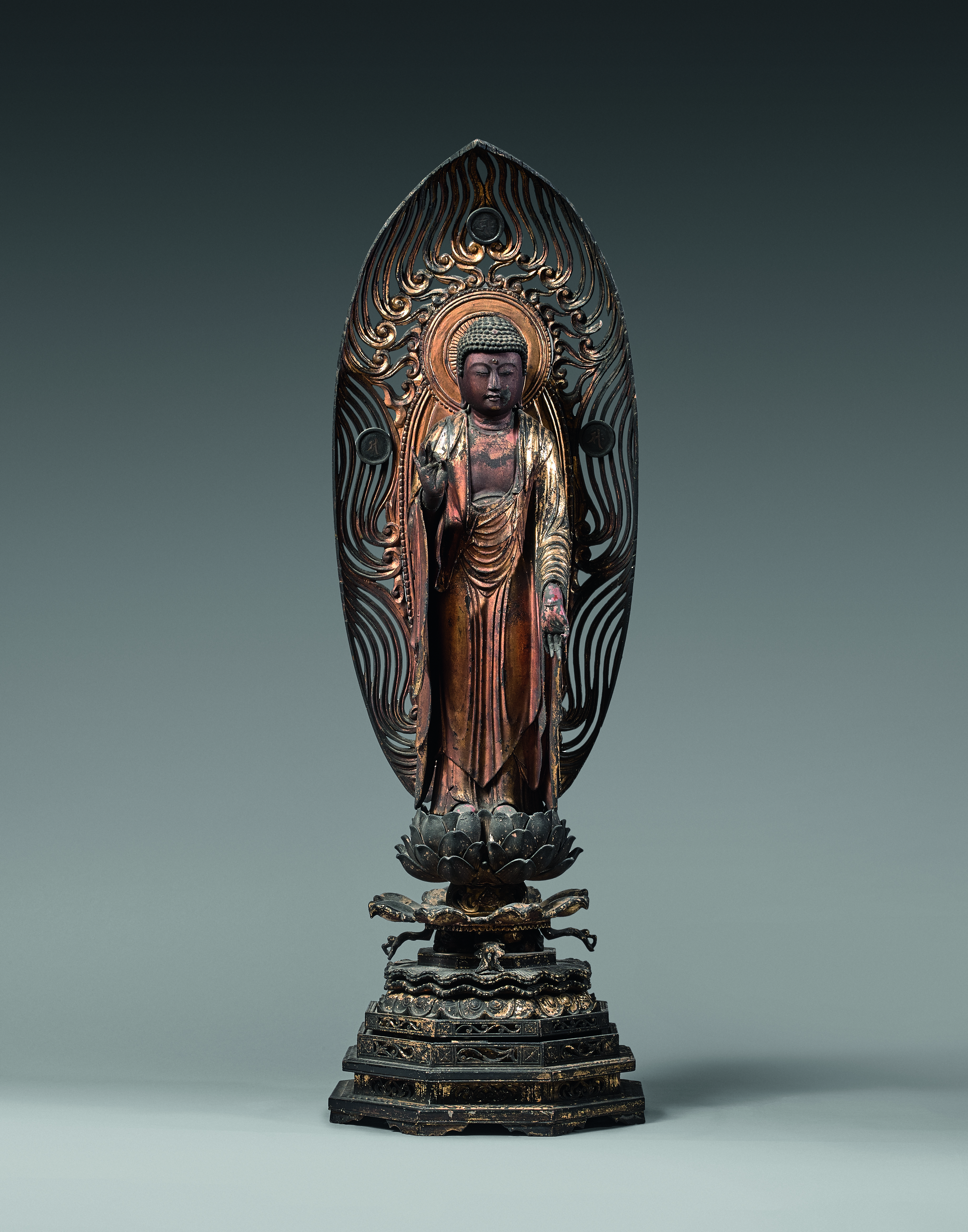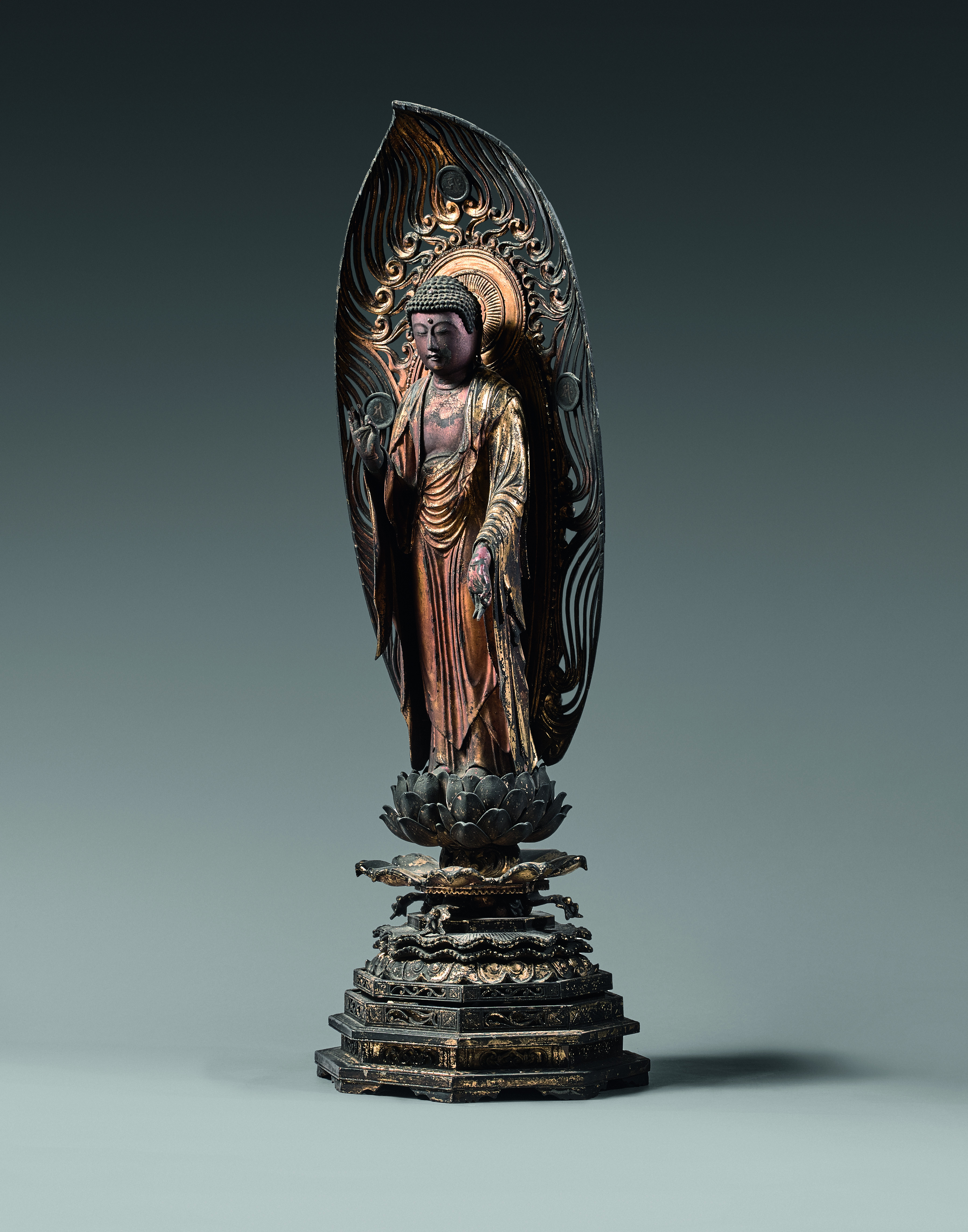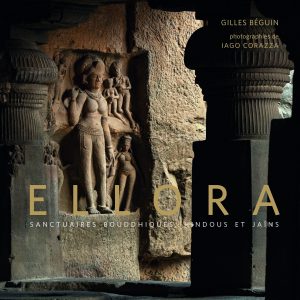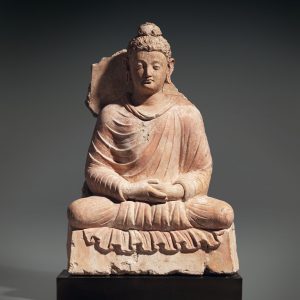Amida Buddha
Lacquered wood, gilded
Japan
Momoyama era (1573-1603)
H. 76 cm
Description
In the Far East, Amida, the Japanese name forAmitabha, the Buddha of the West, has a fervent following. In one ultimate reincarnation, his devotees hope to be reborn into his pure land of Sukhavati, where they can break free of the chain of causation. Descending from the western mountains and accompanied by two spiritual beings destined to Awakening (bosatsu, bodhisattva) – Kannon (Avalokitesvara) and Seishi (Mahasthamaprapta) – the pious diety appears to the dying as they take their last breath. Whether alone or with his attendants, Amida is depicted in many small wooden reliquaries, objects of private worship. Here, Amida is standing, robed like an Indian monk, his right hand raised and his left hand lowered to make the discussion gesture (vitarka mudra). This depiction must be compared with Buddhas making the usual gestures of the Far East: the gesture of fearlessness (abhaya mudra) and of dispensing of boons (varada mudra). The combination of these two gestures, called the “laiying” or welcome in China, usually replaces the teaching gesture. The figure is standing atop a richly-decorated pedestal depicting a fully-opened lotus flower; underneath that is a quadruple octogonal base with fine carving. At either shoulder and above the head is a disk containing the mantra, an allusion to the salvational phrase specific to this deity.
The figure is surrounded by a halo. Around that is a mandorla with openwork, which is unusual in this type of depiction and which lends the work its originality.
The massive destruction caused by numerous civil wars during the Muromachi (1335-1573) and Momoyama (1573-1603) Periods didn’t incite patrons to repair and complement sculpted ensembles in an innovative style but rather to perpetuate the refined art of the Heian Period
(794-1185), during the governance of the first Fujiwara regents. This aesthetic reference, which had become “classical”, served periodically as a reference over the last seven centuries.
The sculptors kept the extreme elongation of the body, the fluidity of the draping, the circular faces with a restrained expression yet youthful, kindly traits. Note the contrast between the delicately painted flesh and the gilded decoration and draping. The impeccable nature of this gilding and the extreme quality of the pedestal link this work to the Momoyama Period, when decorative arts were at their apogee.
The statuettes can be compared to a triad conserved at the Musée des Arts asiatiques-Guimet (Frank, 1991, p. 88-89, No. 21).
Provenance : Private collection, France, since 1988.






